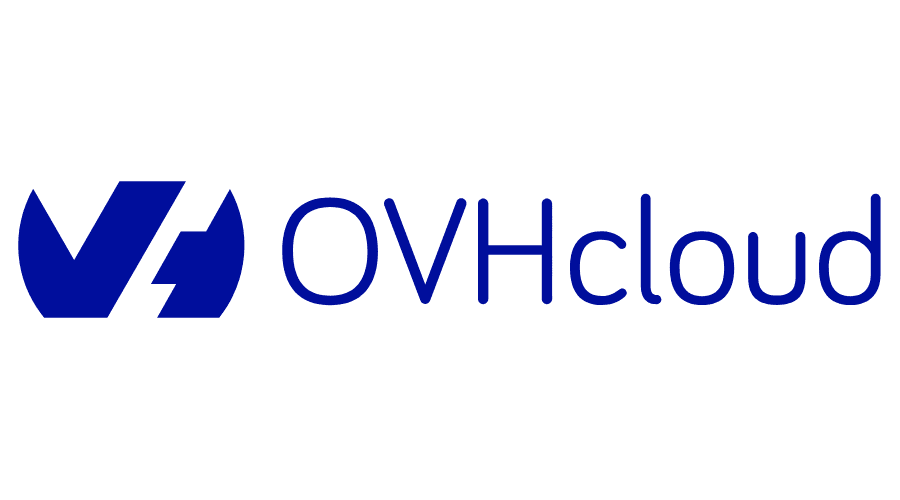In our last article, we provided a brief overview of the emerging dataverse, its associated potential, and the reasons that make it such an important development when it comes to promoting self-determination and data ownership. To better understand the benefits, however, it is useful to take a closer look at the current data landscape and address the status quo of how organizations are working with their proprietary data. In this way, both the opportunities and the risks of an open data sharing economy become clearer.
We’ve all heard that data is the oil of the 21st century economy. But despite being such a valuable commodity, large amounts of it seem to go unused, or at least not used to its full potential. Jay Baer, a marketing expert, sums it up best:
“ We are surrounded by data, but starved for insights.”¹
Estimates of the proportion of unused data vary. A survey of 1,500 executives worldwide conducted in 2020 shows that more than ⅔ of the data available to companies remains unused². This is precisely where a rethink is needed, especially in an economic country as dominated by small and medium-sized enterprises as Germany. We must not leave the next evolutionary step in the provision and processing of data once again to Silicon Valley and the large technology companies based abroad.
Big Data and AI have gained a lot of traction over the last decade, but it’s mostly big tech companies and data brokers that are reaping the benefits. Individuals and customer relationships with companies are being used to mine big data. Unfortunately, people and even companies have gotten us so used to using free products and external services that thought about what happens to all that data is rarely given. But life is an interplay of cause and effect, and in this competition for dominance over the data economy, “If the product is free, you are the product.”
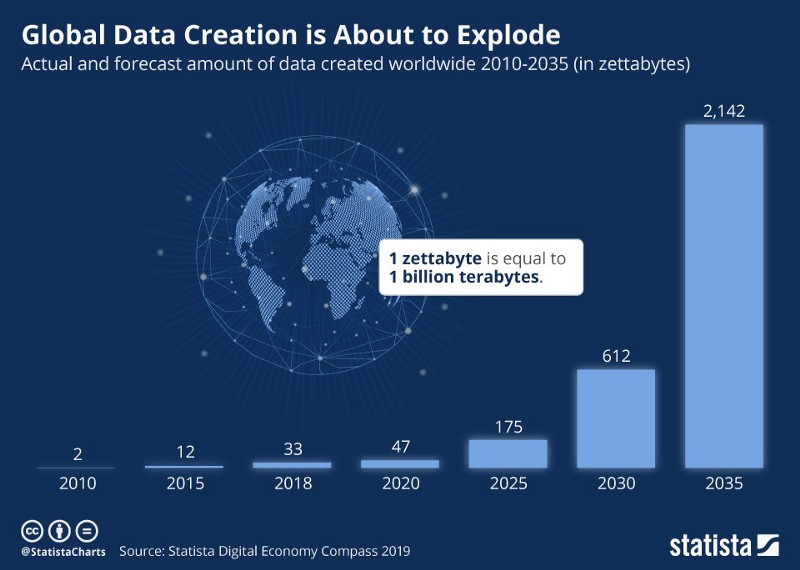
Although many organizations have begun to incorporate the simple analysis of the data they store into their business processes, most lack the resources, data volumes, and/or expertise to perform targeted data analysis.
Similarly, there is a lack of collaboration between companies and industries when it comes to sharing data. Most companies keep their data completely compartmentalized and would never consider sharing certain information with competitors under any circumstances, even if it would be mutually beneficial. It is precisely for this trust issue that WeDataNation’s Algorithm-as-a-Service principle offers a solution.
“We enable insights from data, that no one has ever seen. “
— Henry Concilio (CEO WeDataNation)
Many are unaware that new technologies and approaches that govern data licensing, access and monetization are currently paving the way for a new kind of data economy. Combining data sharing with monetization opportunities for individuals and companies opens up new possibilities, the potential of which we can only guess at today. Every day we are in contact with companies to develop these opportunities towards product/market fit.
A simple way for companies to leverage their data.
To simplify the mechanics of a more open, collaborative data space, we’ll outline a vague approach to how companies might pool their data so that everyone benefits.
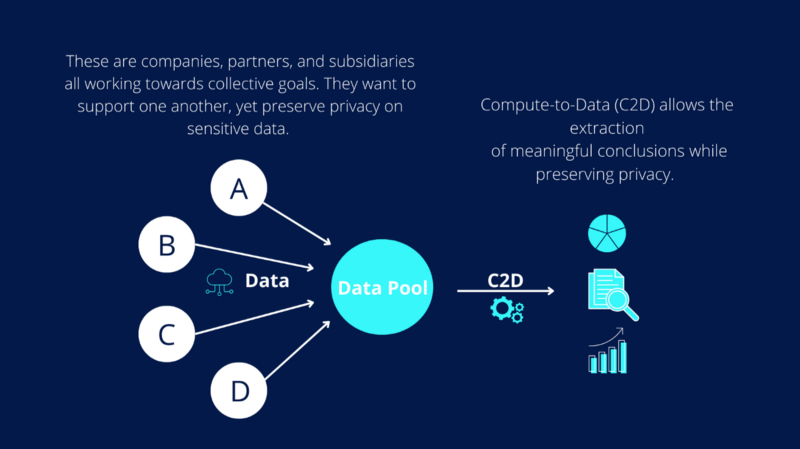
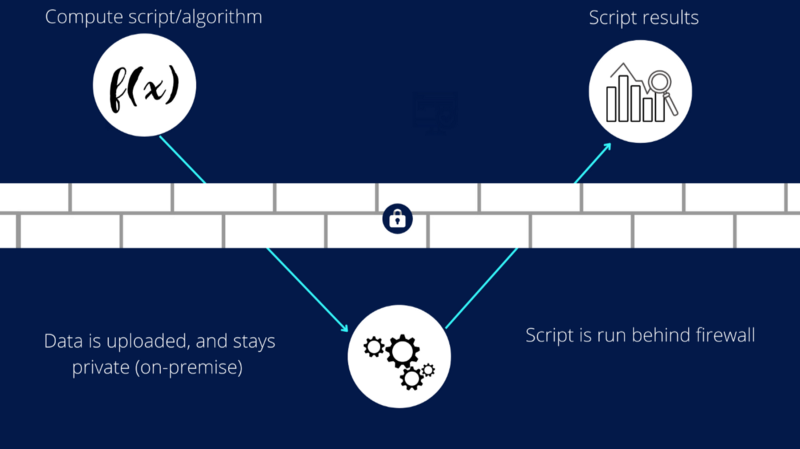
Of course, one can look at the resulting benefits from another angle. Instead of publishing data, a DataScientist can publish algorithms and comfortably earn a passive income by sharing in the revenue for each use of one of these algorithms by a third party. This incentive ensures that the ecosystem does not grow unilaterally. A decent balance between data producers, DataScientists and end consumers occurs. “In this way, the marketplace essentially combines DaaS (Data-as-a-Service) with AaaS (Algorithms-as-a-Service), creating a unique ecosystem that allows different parties to benefit through collaboration.”- Henry Concilio (CEO WeDataNation).
In the long term, the functionalities offered in the Dataverse will grow enormously. At some point, for example, users will be able to publish business workflows, such as those offered by companies like Salesforce, SAP or Hubspot, to the platform, allowing consumers to pay for these services based on usage and making existing SaaS structures obsolete. But that’s a topic for another article.
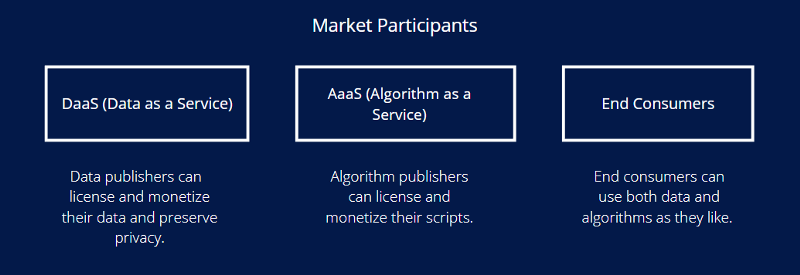
DataUnions pave the way for an integrated data economy
Put simply, a DataUnion is an association of individuals, organizations, and companies that pool their data securely, encrypted, and inaccessible to anyone but themselves in order to achieve “economies of scale” in the usability of that data (i.e., better results due to more comprehensive data). Association members decide how their data is used: they decide who gets access, when, for how long, and for what purpose.
DataUnions are formed primarily for two reasons:
- To improve your own data analysis or
- Monetizing your own data.
Let’s illustrate some scenarios.
1) Improve your analysis (intra-industry)
Let’s imagine an automotive supplier that either does not want to/cannot deal with data analysis itself or lacks the data scope for data analysis. However, the data it collects clearly represents added value for third parties — theoretically also for competitors. As well as virtually all data, which is currently still stored unused at most companies and receives little attention.
The ability to offer its own data to third parties for analysis is therefore potentially profitable, but can weaken its own market position. For this reason, it makes sense for this automotive supplier to contribute its data to a pool of automotive supplier data: A so-called DataUnion. This pool is then available for evaluation by an entire industry, market research companies or potential car manufacturers who pay for the evaluation.
The auto supplier not only earns a share when the pool of data it provides is used, while customers can use the insights gained to improve their predictive, business management capabilities. It can also benefit from the insights itself, through deep industry intelligence that put its own data in relation to competitors or partners. The DataUnion is managed by its members on a pro-rata basis. This allows them to have a say in usage, pricing, exclusion criteria for potential prospects, etc.
2) Monetization of own data (inter-industry).
The already well-known automotive supplier could also license its data and sell access for algorithmic analysis to a data aggregation company. This data aggregation company has an interest in collecting as many data sets as possible from a variety of industries in order to be able to offer these in turn to external third parties for analysis. Direct access as well as sale of the data is excluded by license. Even the acquiring data aggregation company does not gain direct insight into the data, but only permission to use it for A-a-a-S services.
Potential customers would be market research firms, with an interest in using this data pool to make statements about inflation, market trends, circulation times, and more.
A payment is made to the data aggregation company for the use of the data, which then transfers a fee to the auto supplier for the use of the licensed data in accordance with previously negotiated terms.
Conclusion
Data monopolies that closely monitor and analyze our Internet behavior and lock users into their isolated ecosystem have long enough led us to believe that there is no way to use our data, let alone monetize it. But we are in the midst of a process, thanks to the power of blockchain and the Web3, that seeks a more self-determined future: A democratic, self-determined future of the data economy lies ahead — We may choose to finally have a say.
Sources
1) https://twitter.com/jaybaer/status/494520032173776896?lang=de
2) https://www.frontier-enterprise.com/two-thirds-of-data-available-to-firms-goes-unused/
3) https://www.statista.com/chart/17727/global-data-creation-forecasts/
4) https://oceanprotocol.com/tech-whitepaper.pdf

About WeDataNation
WeDataNation’s mission is to enable individuals to unfold the true value and potential of the data they generate. The world’s first AI-generated avatar based on each user’s unique dataset of interests, behaviors, interactions, and more is just one of the many visualization features we offer. With WeDataNation, users will finally receive the tools to easily analyze their data and generate passive income.
For more content, follow us on LinkedIn, Twitter or Instagram.



